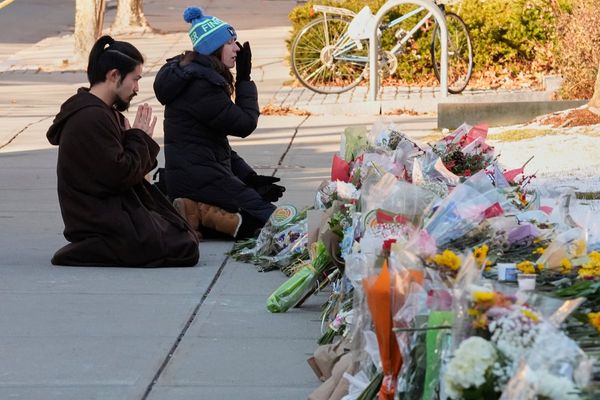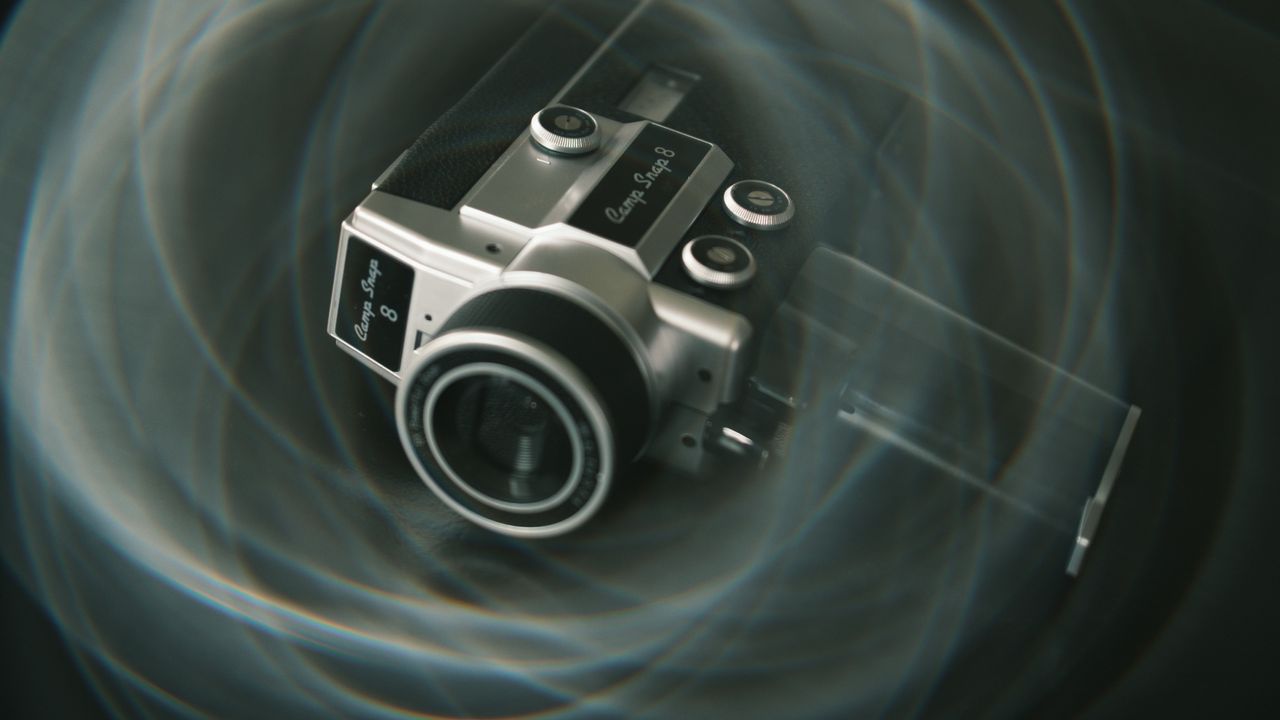
The resurging trend for retro tech has brought dozens of different mirrorless cameras with a nostalgic look. But one category has been largely left out of the retro camera trend: videos. Sure, retro mirrorless cameras can shoot both stills and video, but true vintage cameras were either still cameras or camcorders, not both.
Enter the Camp Snap CS-8. Designed to look like a Super 8 camera from the 1970s, the CS-8 is a digital dupe of a classic camcorder style. The video camera’s retro feel starts with a trigger-style design and ends with video filled with dust and scratches and film-like colors.
The CS-8 comes from the same company behind the Camp Snap screen-free camera. That still camera was originally designed for kids to take to summer camps with no-screen rules, but it also found a following for feeling like a digital version of disposable film cameras. The CS-8 is designed to be just as distraction-free. There’s an electronic viewfinder, but no screen to playback those videos right away.
The CS-8 isn’t designed for best-in-class video – it’s designed to bring the joy back into capturing memories, throwback style.
Camp Snap CS-8: Specifications
Sensor |
2.7K, 1/2.7-inch |
Zoom |
8x, digital |
Lens |
f/2.0 3.29mm |
Color profiles |
5 |
Stabilization |
None |
Frame rate |
30 fps, 18 fps in Analog mode |
Memory |
SD card (4GB card included) |
Charging |
USB-C |
Aspect ratios |
4:3, 19:9, 1:1, 9:16 |
Camp Snap CS-8: Price
The Camp Snap CS-8 lists for a $199 (about £147 / AU$302). During the initial launch, pre-orders are selling with a 25 percent discount directly from Camp Snap.
Camp Snap CS-8: Build and handling
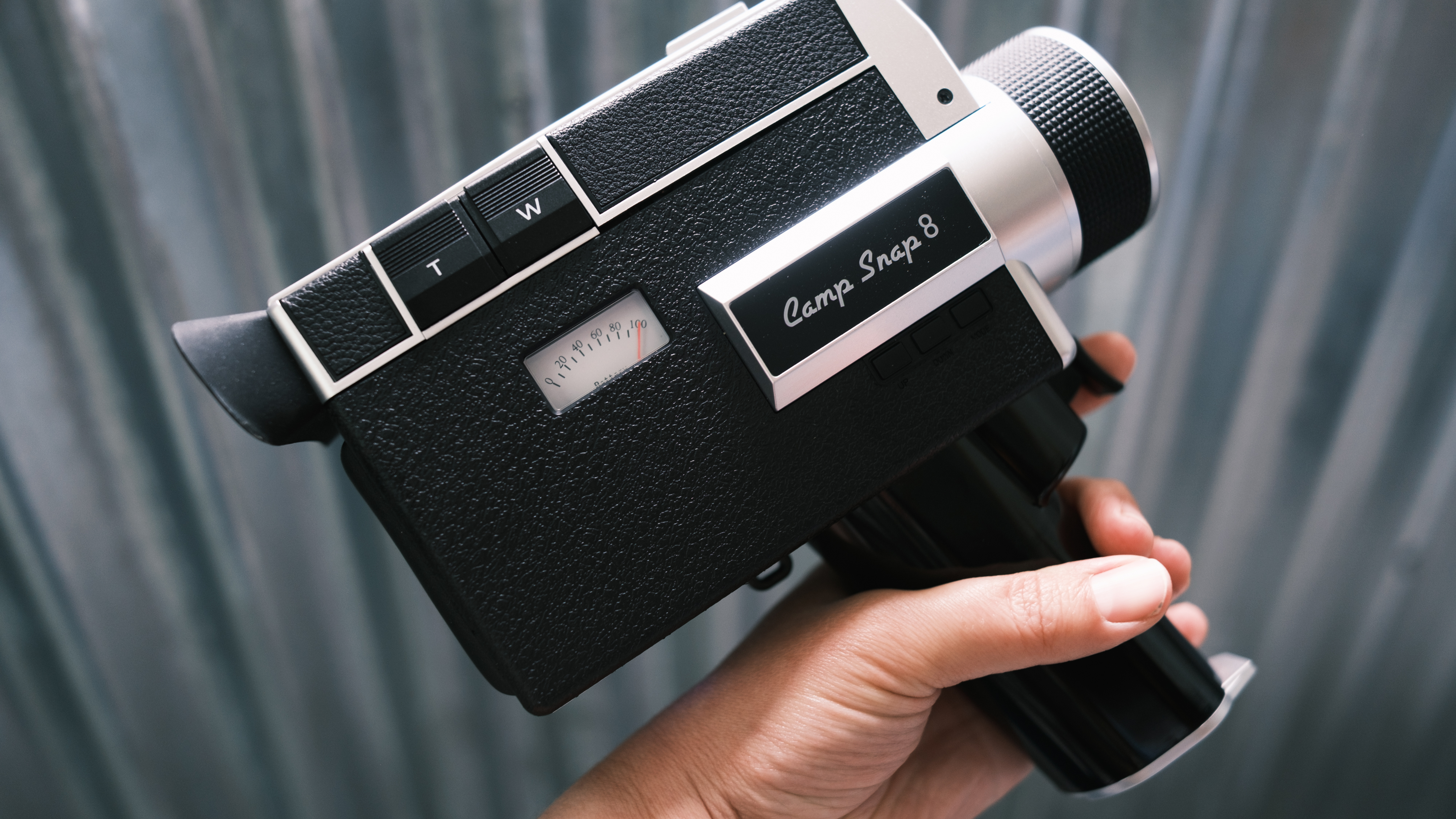
Because the Camp Snap CS-8 is a budget-priced video camera, I opened the box fully expecting something that feels plasticky and cheap. That’s not at all what my first impression of the camera was, however. Yes, the camera is undoubtedly made with plastic. But it doesn’t feel chintzy. (Another unexpected element for a cheap camera? It includes everything you need to get started in the box, including a 4GB memory card that can hold around 30 minutes of video.)
Much of the camera has a textured feel to it, designed to mimic the leather wraps on retro cameras. The handle is smooth plastic, and there are smooth silver accents at the front and sides. Underneath the viewfinder is a small cushion meant to rest up against your face.
The retro look of the camera goes well beyond the texture. The CS-8 is meant to mimic 1970s Super 8 cameras, and that starts with the shape of the camera. Like the film cameras, the CS-8 has a large handle holding up a boxy design with a viewfinder at the back and a lens at the front.
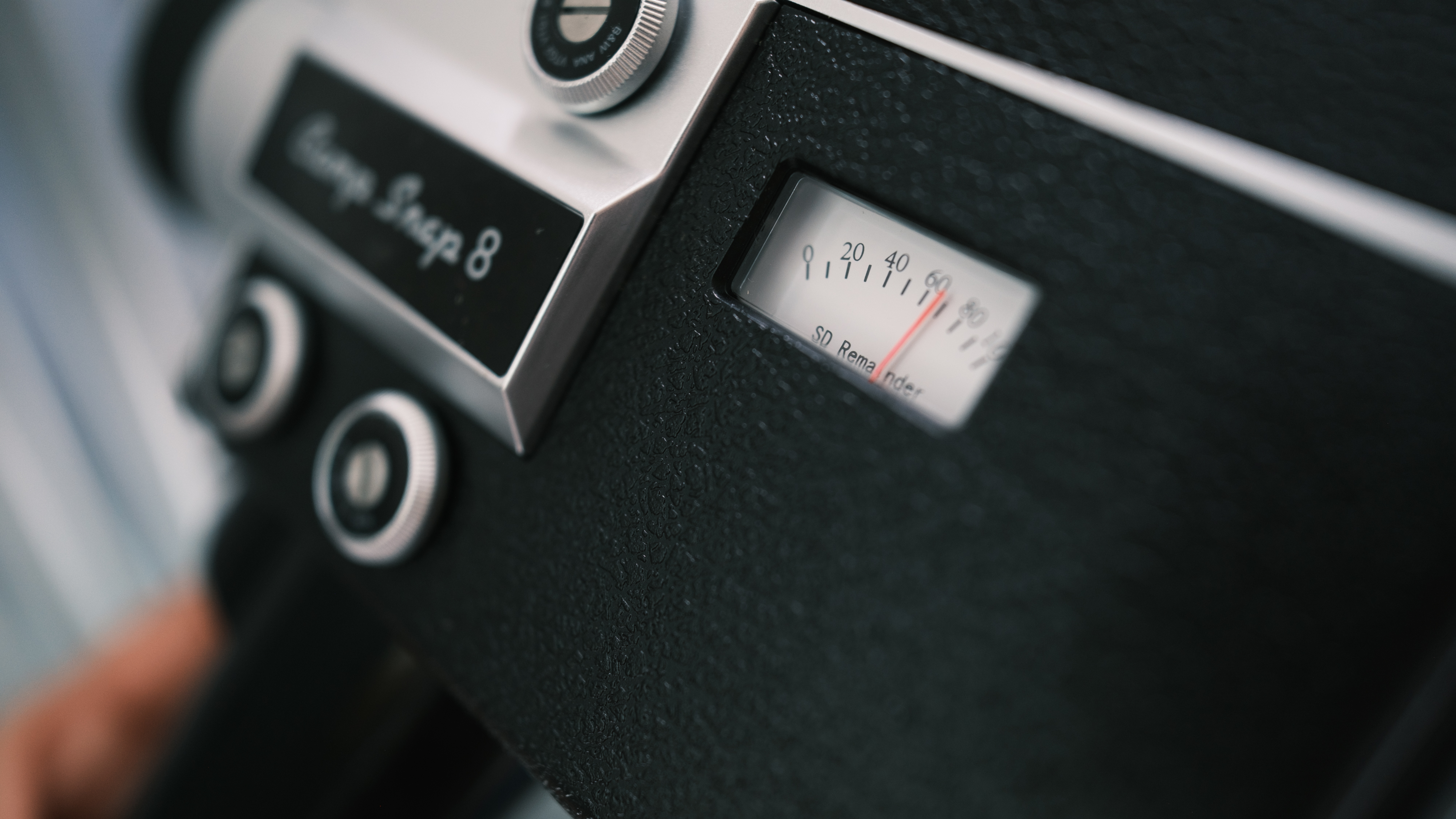
Two analog meters indicate how much battery life remains and how much space is left on the memory card.
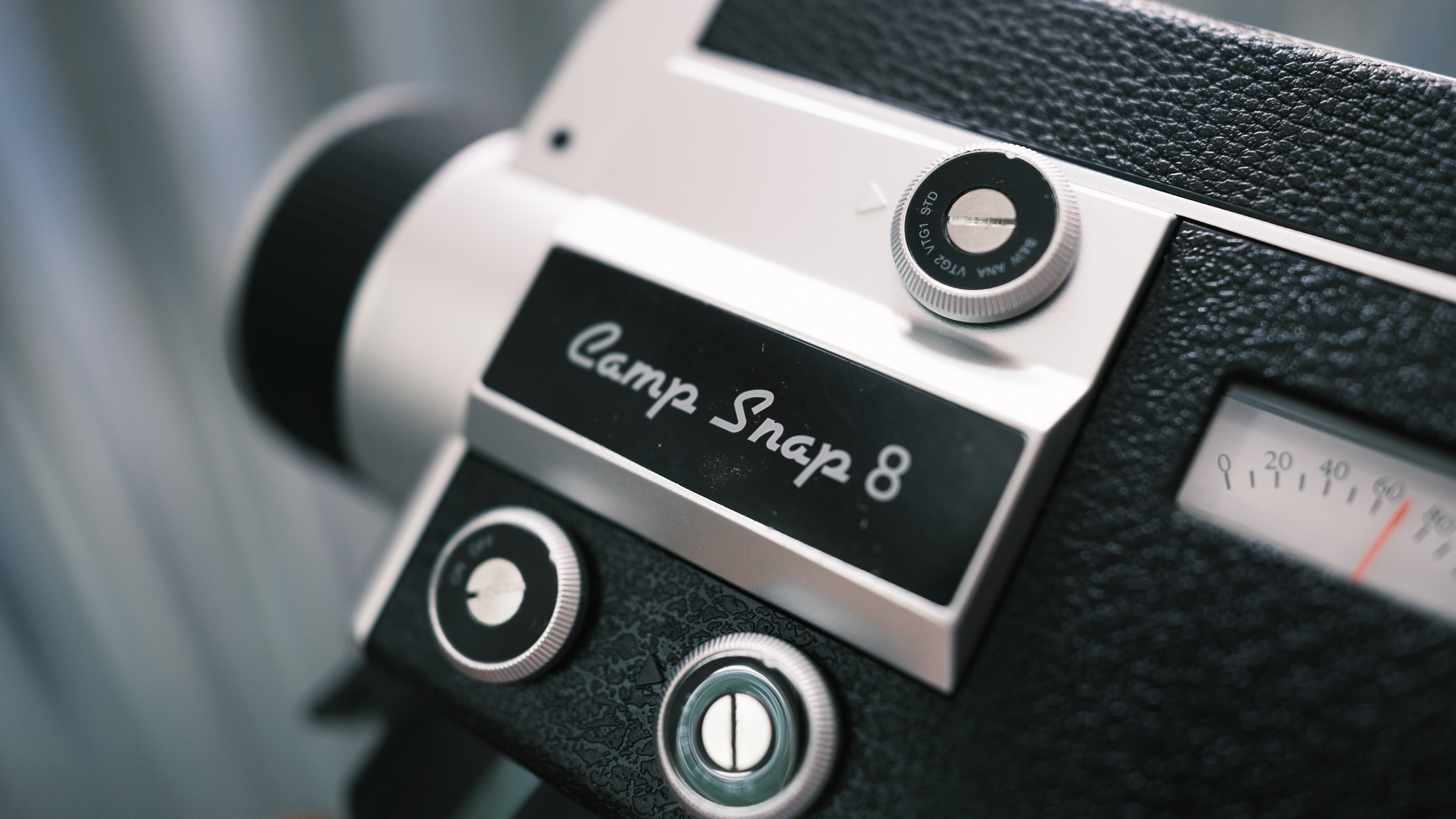
Three dials on the side of the camera house the CS-8’s different shooting options. One of those dials is an on-off switch. The other swaps between different color profiles, and another chooses the aspect ratio of the video. I love having the color modes built into a dial, because the original Camp Snap still camera needs to be plugged into a computer and a new color profile loaded manually, one at a time.
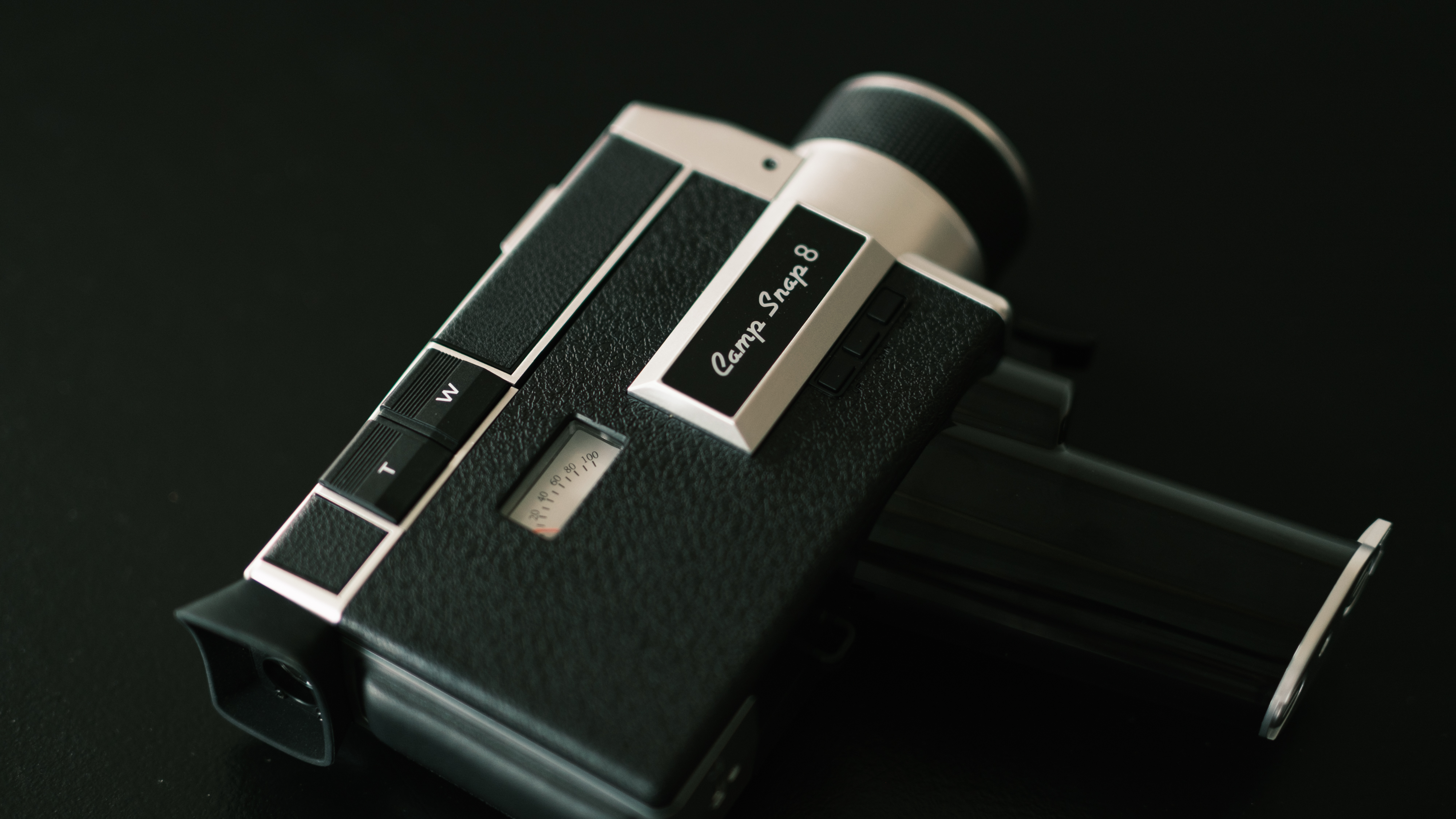
On the opposite side, the CS-8 houses two large toggles for zoom. A set of three buttons underneath the Camp Snap logo are used for the menu. As a camera without a large playback screen, this menu is mostly just setting the time and date.
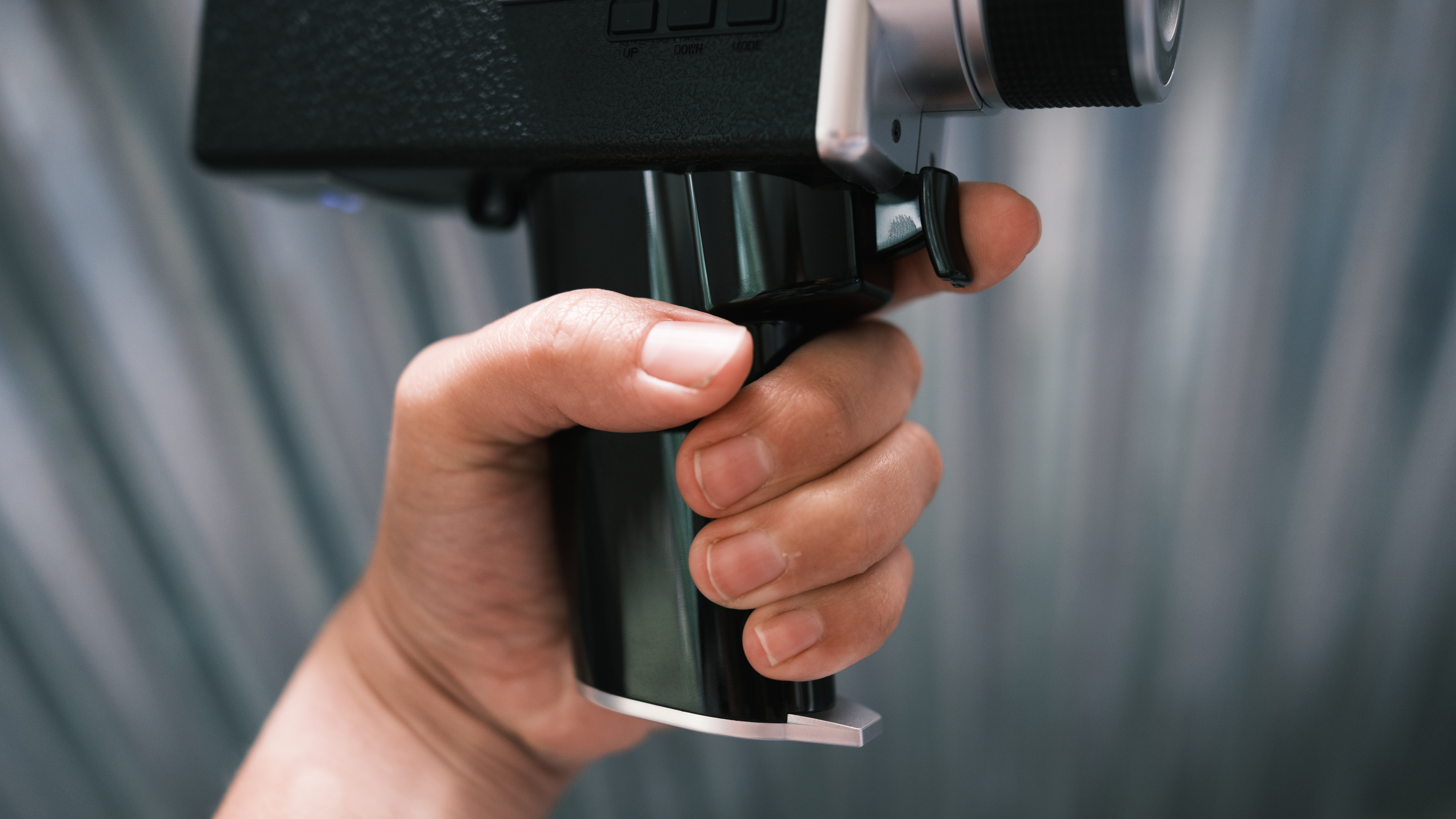
In keeping with the style of Super 8 cameras, there’s no record button. Instead, a trigger starts and stops the recording: as long as the trigger is pressed, the camera is recording, release the trigger and the recording stops. This is a fun way to shoot short clips, but influencers be forewarned – there’s no way to record yourself without a second person (or perhaps a rubber band around the trigger).

On the opposite side of the grip at the bottom of the camera, there’s a loop for attaching a lanyard or camera strap, and there’s a USB-C port at the bottom corner for charging.
Like the original Camp Snap stills camera, the CS-8 is screen-free, or near enough anyway. The viewfinder is the electronic type, not the optical type, but there’s no playback, so the CS-8 maintains the delayed gratification of not having a screen to look at the videos right away.
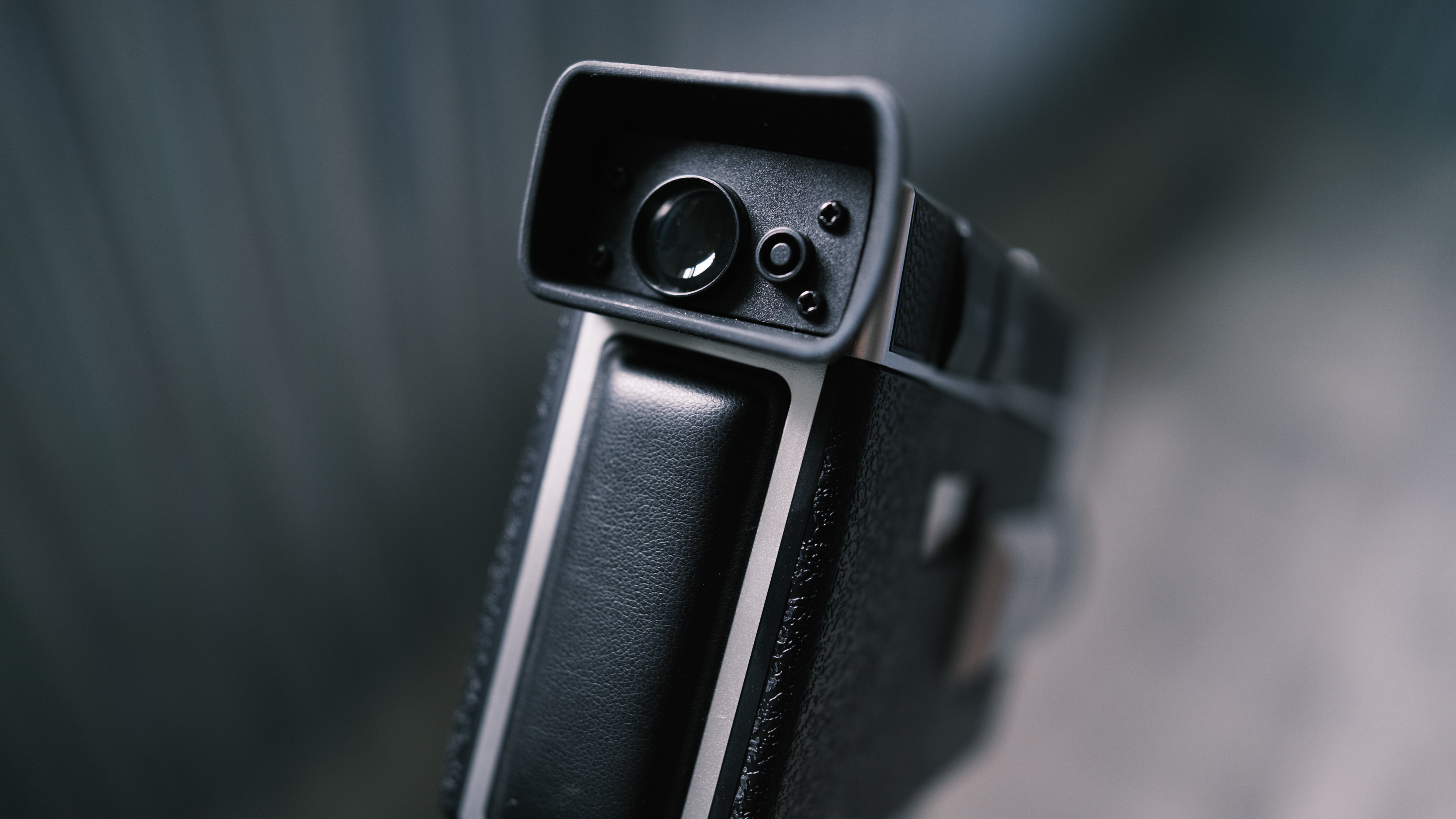
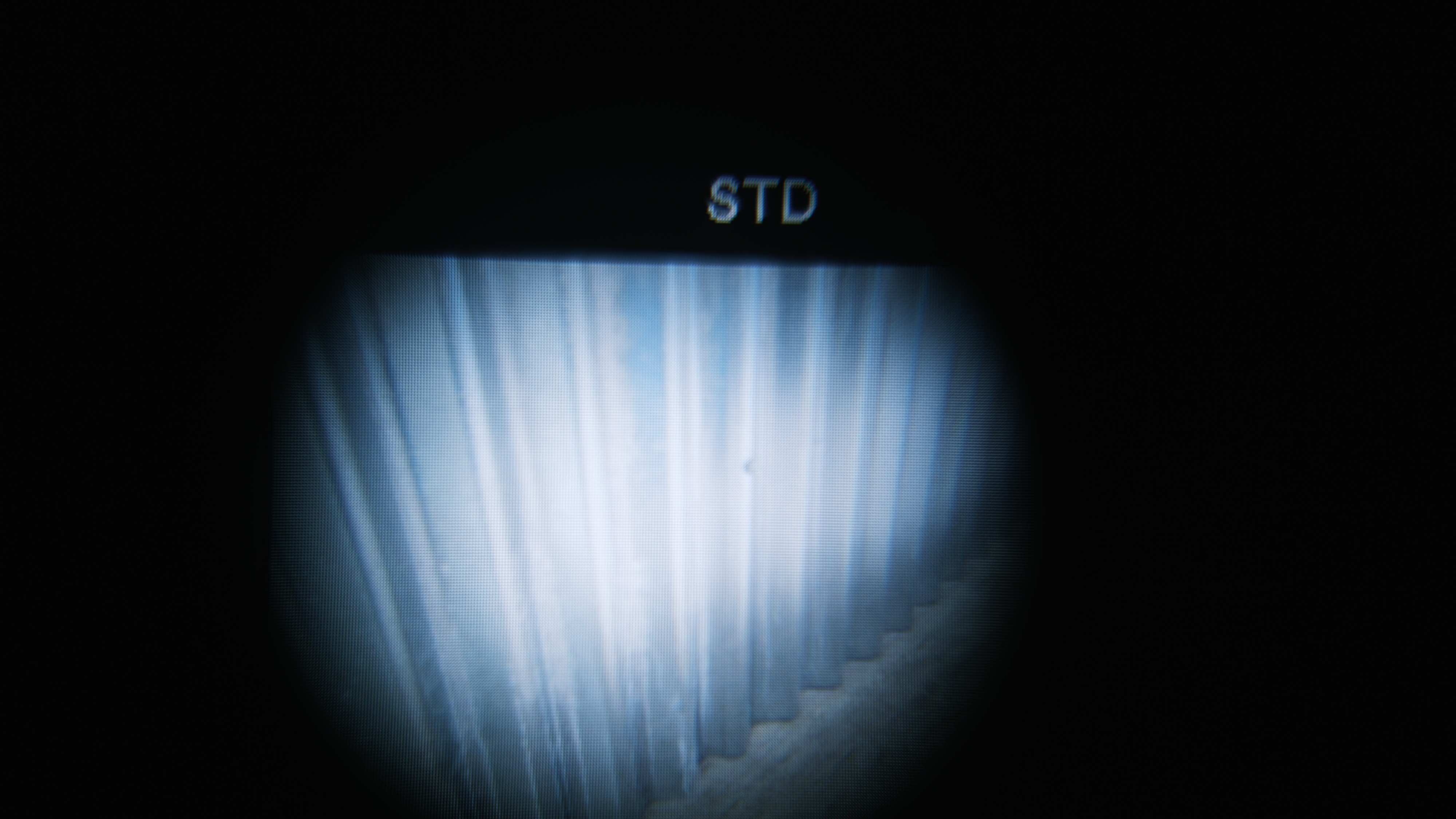
The quality of the viewfinder in terms of resolution isn’t great, but I wasn’t expecting greatness here for this price point. While I enjoyed the experience of using the viewfinder, it’s a bit more challenging to use when wearing glasses. There’s a battery life indicator, the color mode, and the aspect ratio indicated at the top of the viewfinder. But with glasses on, my eye wasn’t close enough to see the full view, and I had to tilt my head just right to catch a glimpse of that data. Without glasses, the experience was far better, but it is a minor annoyance for those with prescription glasses (or bright sunny days requiring shades).
My biggest complaint about the design of the CS8 is that the memory card is hidden and requires a screwdriver to access. The SD card is located under a plate by the USB-C port that is attached with two screws; it’s the only part of the design that I thought wasn’t self-explanatory and actually took some exploring to find out where, exactly, the memory card was.
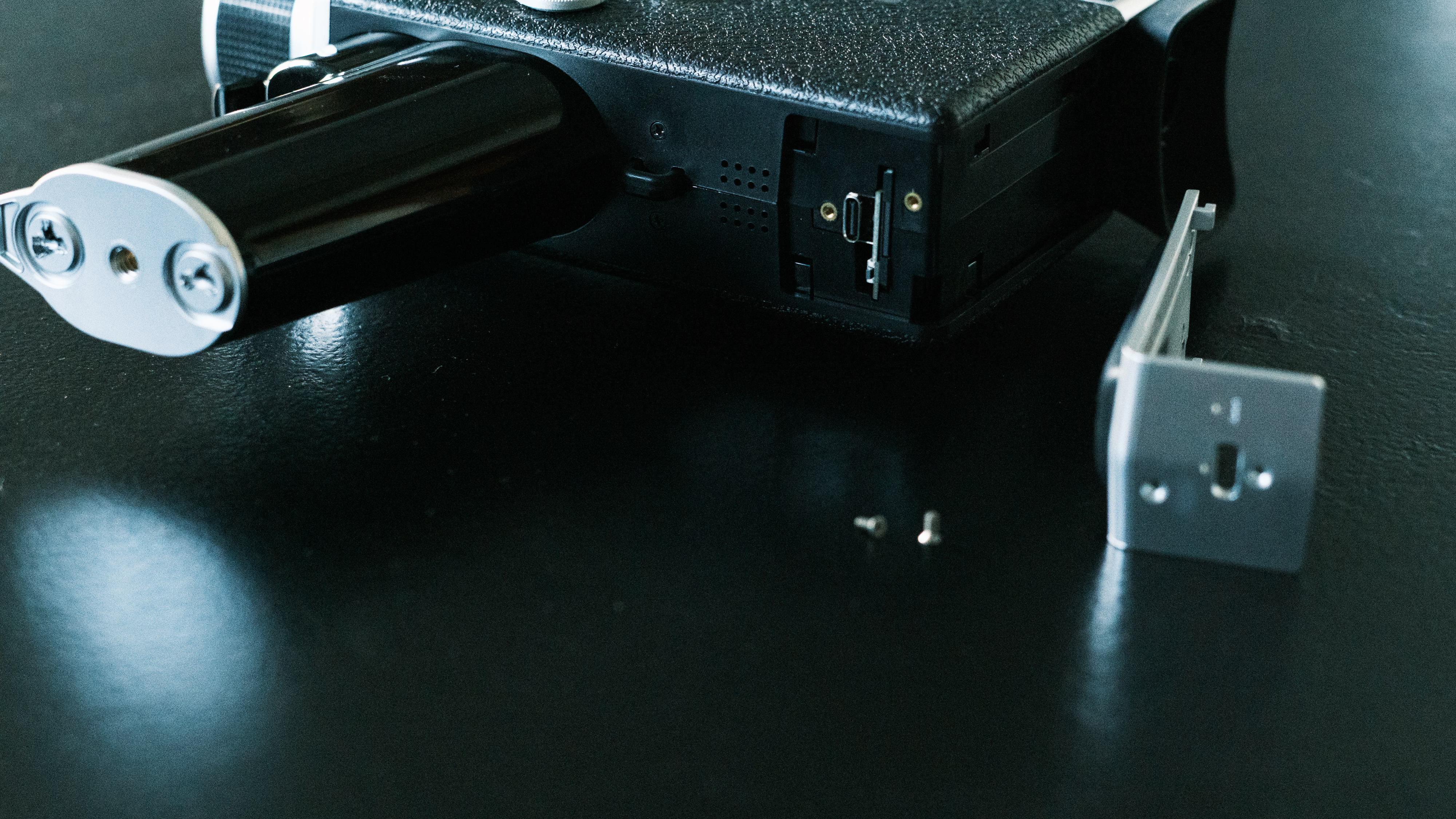
Unless you happen to carry around a screwdriver, you won’t be able to easily swap memory cards while out shooting. Thankfully, the camera is made for short clips and supports a memory card of up to 128GB, so card swaps shouldn’t be required often. If you use the included 4GB memory card, which fits about 30 minutes of footage, and the USB cable for transferring data, you won’t need to mess with the tiny screws at all.
The downside of the CS-8’s retro look and shape is that it’s a little bulky and oddly shaped. The main box of the camera is around 5 by 3.5 inches, excluding the bump of the lens and viewfinder. With the shape of the handle, however, the camera ends up being around seven inches in length.
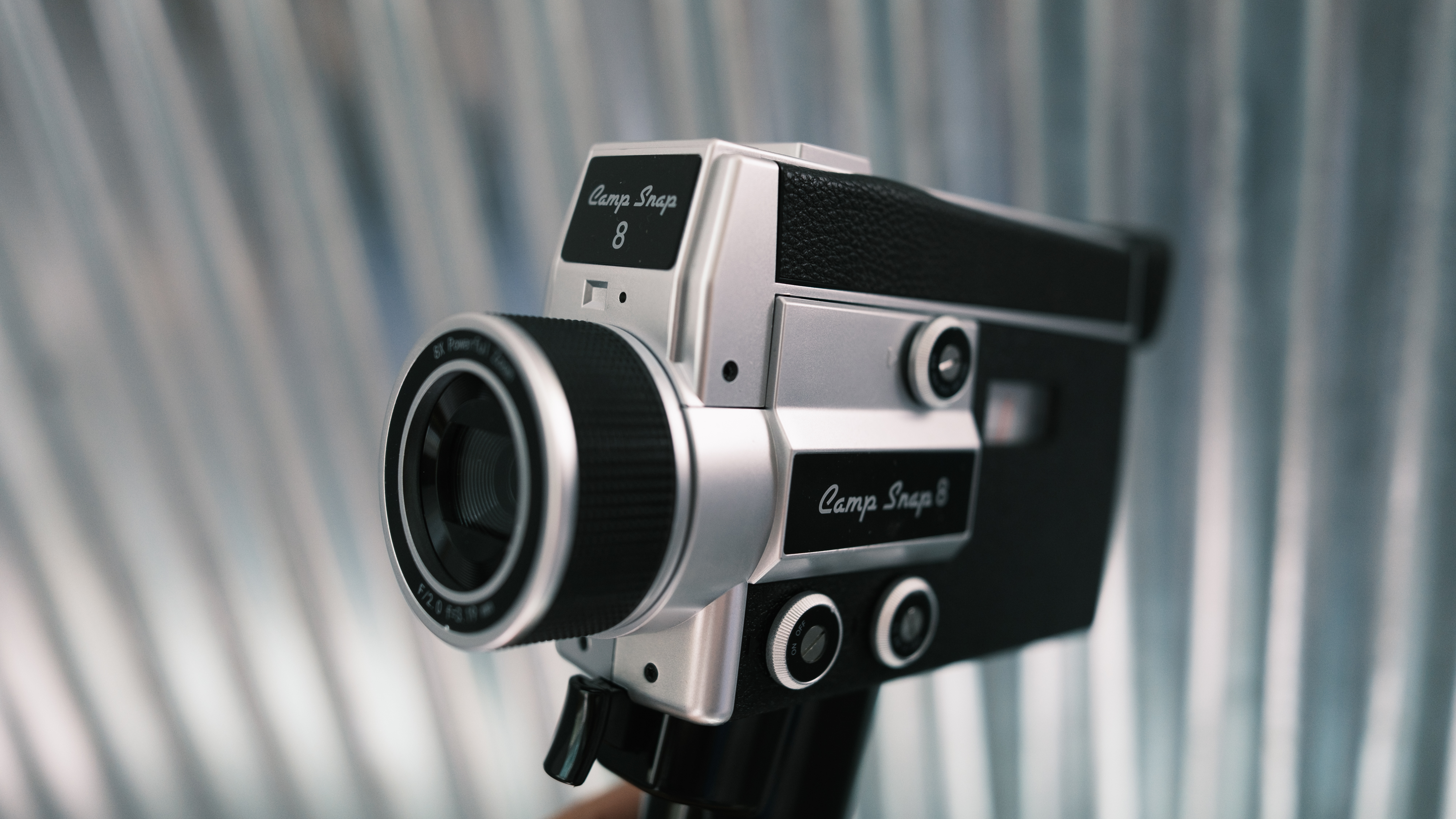
Thankfully, despite the size, it’s not terribly heavy, and it wasn’t much of a pain to carry around for long periods.
I’ll admit that I’ve never used a Super 8 film camera, so I can’t attest as to just how close this digital dupe comes to the real thing. But I can say with confidence: the Camp Snap CS-8 is the most fun that I’ve had using a camcorder. The mix of dials and retro look is a joy to use, and the lack of any sort of playback ensures that I stay in the moment.
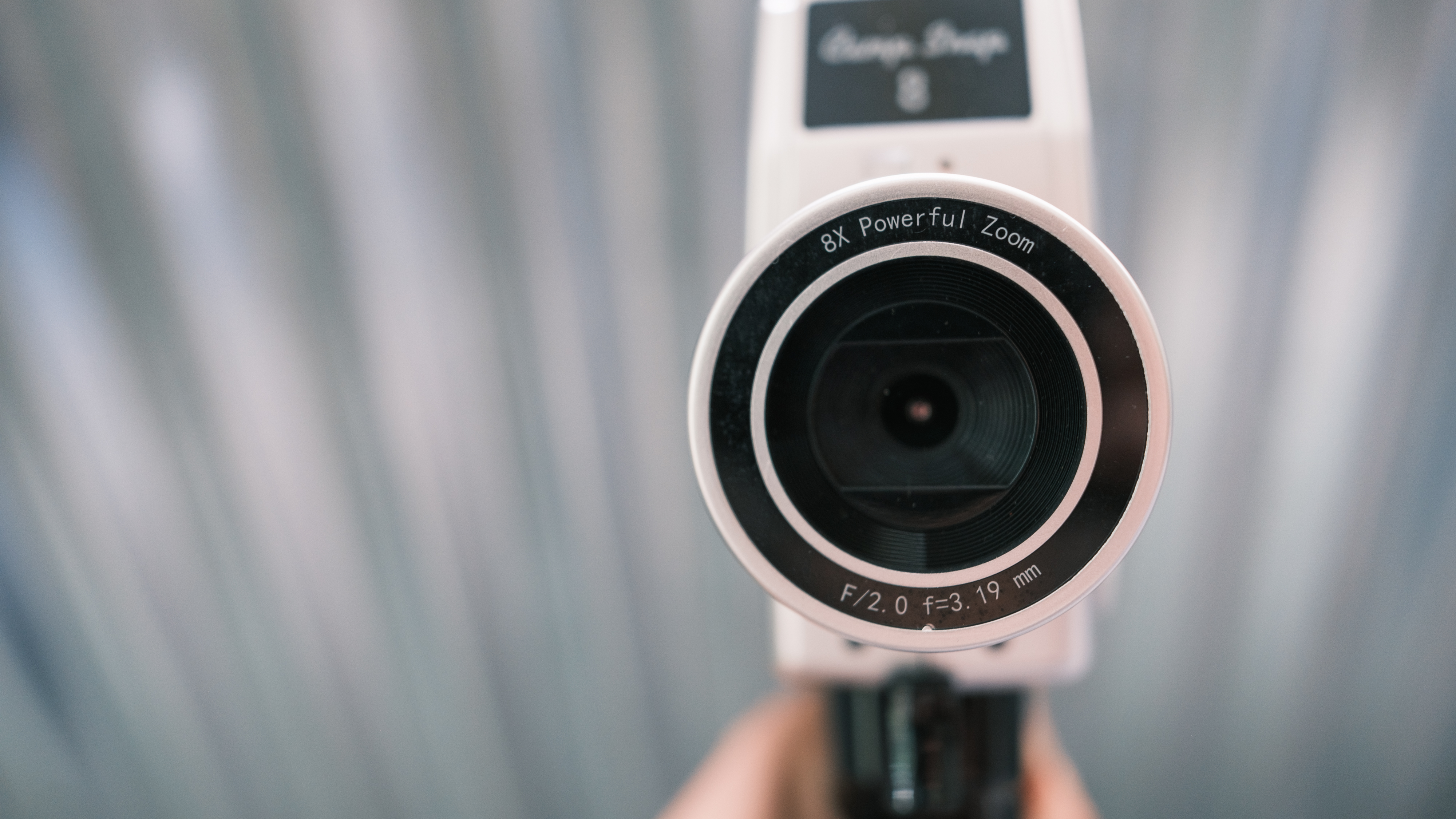
The simple controls, viewfinder, and trigger-style shooting are mixed to deliver a highly entertaining shooting experience. But I didn’t feel like the camera distracted me from the moment either. The trigger-style shooting is ideal for short clips and Reels – it’s not made for tasks like, say, recording an entire kids' sports match.
Camp Snap CS-8: Performance
The Camp Snap CS-8 isn’t made to just look and feel retro on the outside – it’s designed to shoot clips that feel a bit old school as well. Old school video is far from the pixel-peeping high resolution and fast frame rates of modern video cameras. In standard mode, the CS-8 can shoot 2.7K video that’s not half bad (if you don’t touch the zoom toggle) for a cheap camera. But flip the dial to one of the retro color modes, and the CS-8 cranks up the nostalgia for imperfect videos.
The CS-8 has a small 1/2.7-inch sensor that shoots 2.7K video at 30 fps in most modes. The resolution and clarity aren’t bad, and in standard mode, the colors are bright and punchy. The 2.7K resolution at 30 fps obviously isn’t best in class, but felt a little similar to the quality on some smartphones and is more than enough for sharing on social media.
Watching footage from the CS-8 in the standard color mode, I could almost pretend the videos were shot with a standard, modern video camera, except for a few things. First, there’s no stabilization, so the footage is a bit shaky, especially if you shoot while walking or moving around.
Second, the 8x zoom is digital, not optical. Cropping into 2.7K video eight times creates rather poor quality videos. The footage at full zoom is pixelated and grainy and virtually unusable. If you zoom in as you are recording, the zoom movement isn’t smooth at all and jitters a bit as it zooms in.
Naturally, selecting a different aspect ratio will also crop into that 2.7K resolution, which means those vertical 9:16 shots aren’t as good as the original 4:3 format. The trigger-style design makes the camera awkward to physically turn to shoot vertical video at full resolution.
The small sensor becomes a bit more obvious when shooting in bright sunlight, when the brightest parts of the footage are sometimes overblown white.
But, the CS-8 isn’t meant to be a best-in-class video camera – it’s meant to be a charming throwback with a few modern conveniences thrown in. Where the CS-8’s exterior retro looks start to bleed over into the videos is when turning that color mode dial to analog.
The analog mode (ANA on the dial) adds film dust and scratches and washed-out, retro colors. Besides altering the colors, the analog mode drops the frame rate to 18 fps – which is on par with real film Super 8 cameras. That gives the footage the jitteriness and imperfections of old film footage.
The footage I shot in the analog mode is among my favorites. Not because the quality is the best, but because there’s something inherently nostalgic about those videos. I shot the footage just a few days ago, but the videos that I captured remind me of my own childhood home videos (even though those videos were shot on VHS, not Super 8).
The CS-8 isn’t designed for best-in-class video, it’s designed for retro charm – and that shows through in the footage shot in analog mode. No, the digital dupe doesn’t look exactly like Super 8 film, but it gets an old-school look with the perks of digital.
The screen-free design of the camera kept me in the moment, but the built-in color profiles gave me more time to have those moments. The color profiles make the footage feel already edited, and that, mixed with the trigger-style shooting that encourages short clips, I felt like I didn’t need to spend as much time editing the footage before sharing.
Outside of choosing the color profile and aspect ratio, the CS-8 leaves few other options to adjust the footage. The autofocus is fixed with no way to adjust the focus manually and, similarly, the videos are all shot on an auto mode.
The CS-8 does have a built-in mic for sound. Audio close to the camera, like when the camera operator speaks, is surprisingly clear. Distant subjects are far quieter, however, so if you need clear dialogue, keeping the subject close to the camera is ideal. The mic can also pick up some wind noise outdoors. In quiet environments, the mic will also pick up an audible click when using the camera’s controls, like the zoom toggles.
Camp Snap CS-8: Verdict
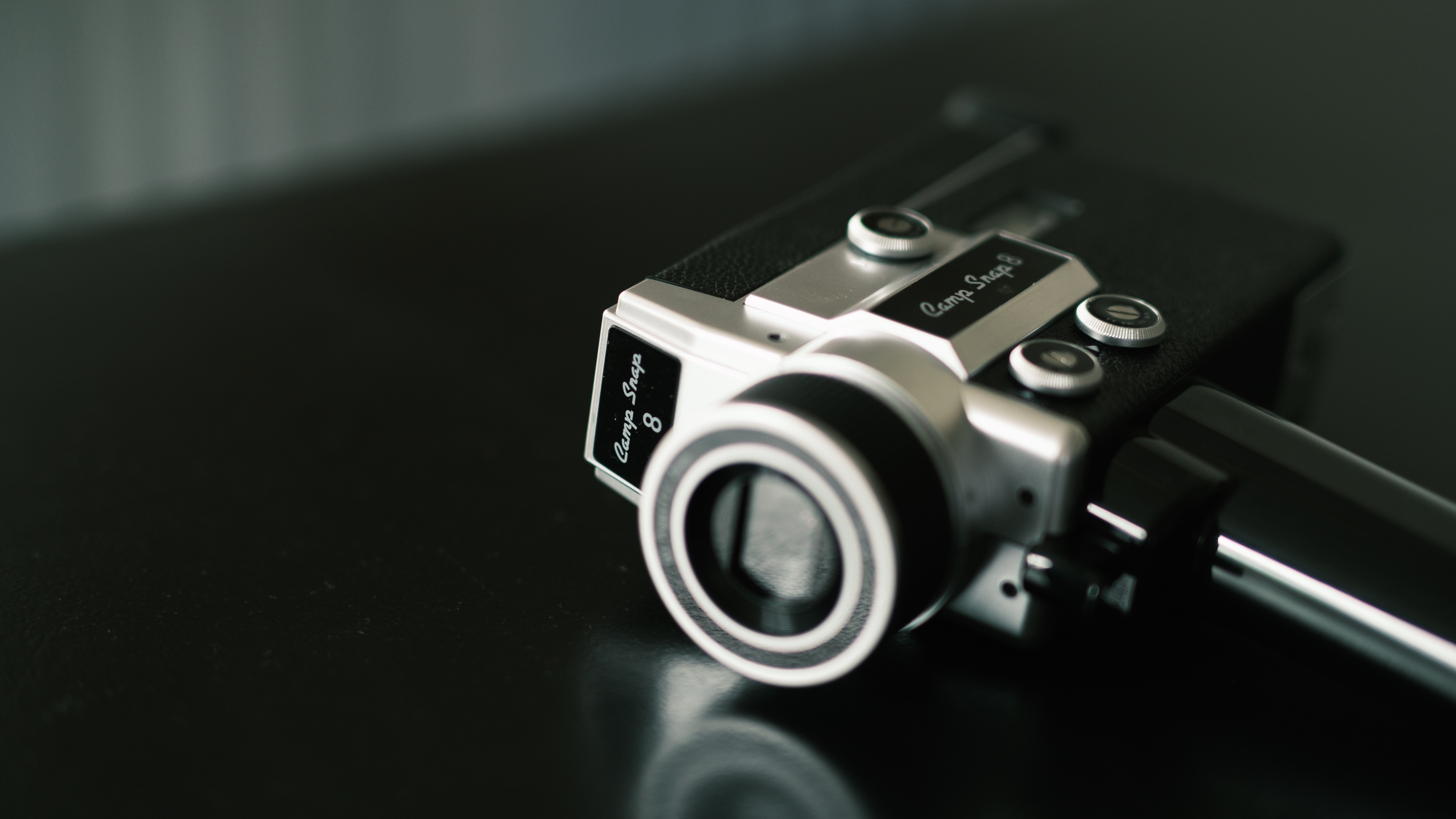
The Camp Snap CS-8 is an imperfect camera, but this digital dupe is by far the most fun that I’ve had shooting video in a long time.
Some cameras ask, how can I create the best footage and other cameras ask, how can I bring more joy to the act of recording video? The CS-8 sits firmly in the latter category. The Camp Snap CS-8 isn’t about capturing perfect videos; it’s about the joy of capturing small moments, it’s about capturing moments with an imperfect, retro quality to them that makes a moment that happened just minutes ago already feel like a nostalgic memory.
The CS-8 isn’t perfect. Swapping the memory card is annoyingly difficult. There’s no stabilization, and the digital zoom dramatically drops the quality of the footage to the point where it's unusable. But the CS-8 isn’t trying to be the best camcorder out there – it’s trying to be the most fun, the most retro way to capture memories in a digital era.
If you want the best video quality that you can find, don’t buy the CS-8. But, if you want a distraction-free camera that’s a joy to shoot and embraces flaws for the sake of nostalgia, then the CS-8 is an easy decision – especially at the affordable list price.

